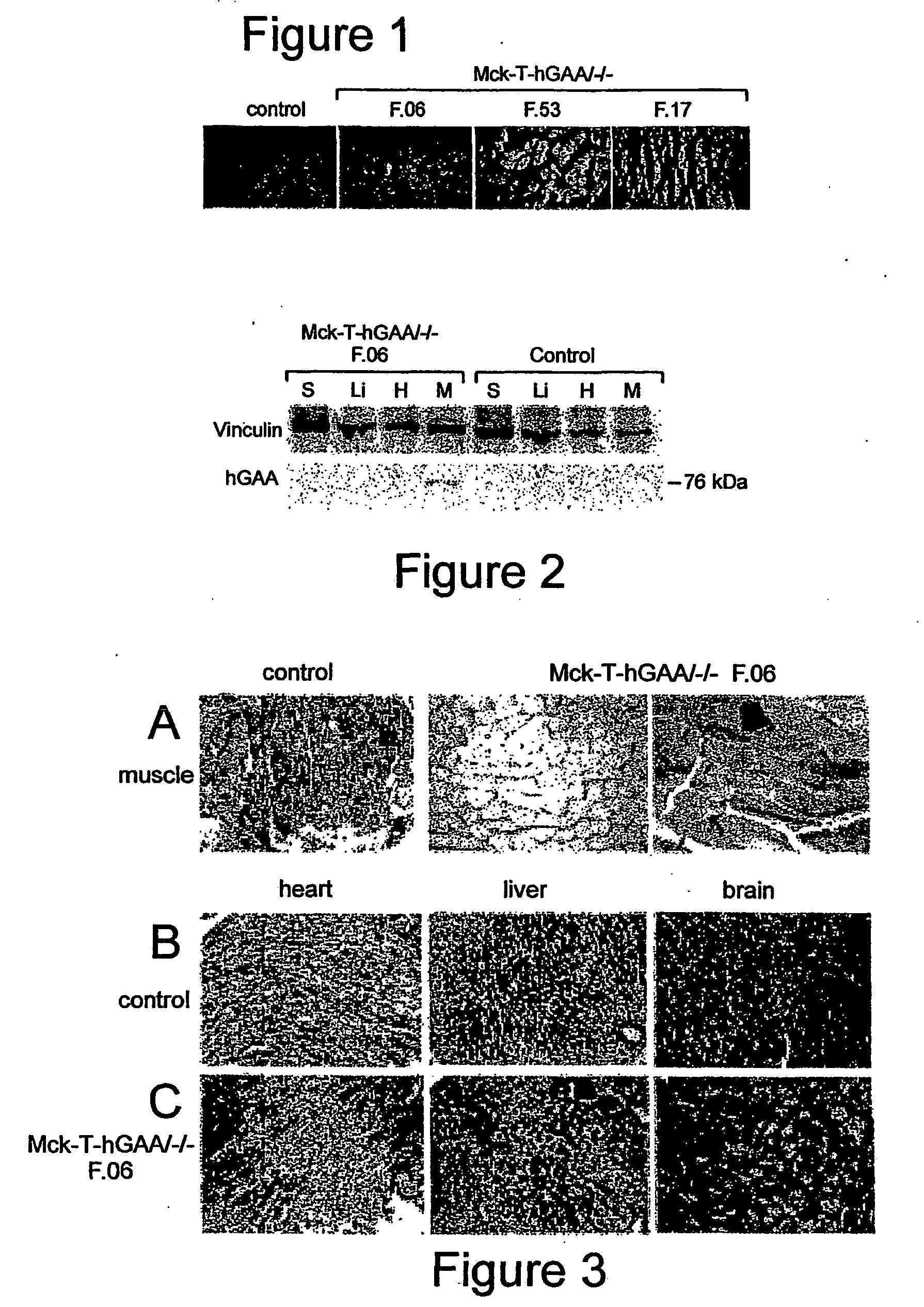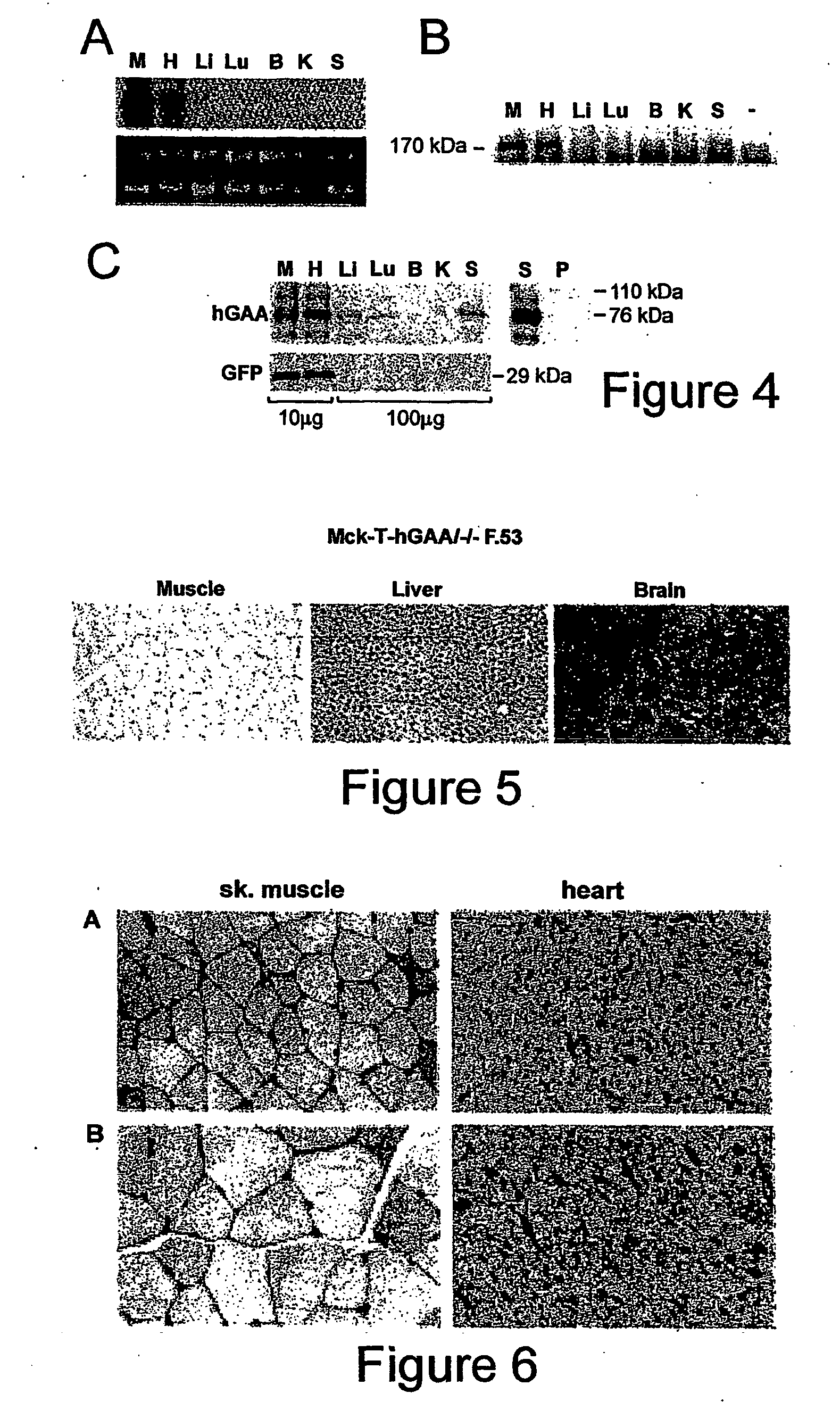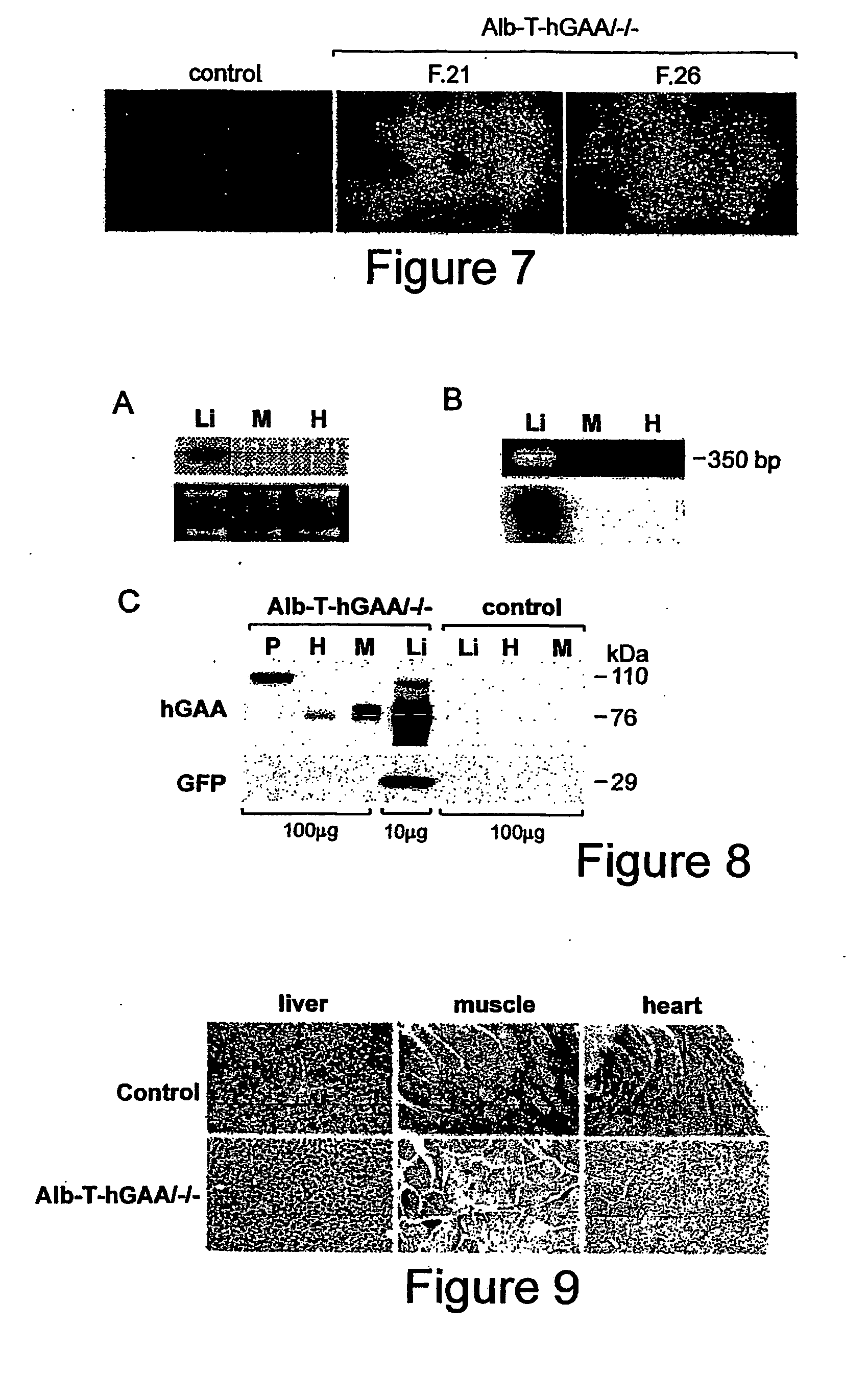Synthesis and secretion of native recombinant lysosomal enzymes by liver
- Summary
- Abstract
- Description
- Claims
- Application Information
AI Technical Summary
Benefits of technology
Problems solved by technology
Method used
Image
Examples
example 1
[0058] This example compares the ability of constitutive expression of GM in muscle cells versus liver cells to correct defects that result from insufficient expression of GM. Generation of GM knockout mice has been reported previously; the knockout mice developed a generalized glycogen storage deficiency, resembling both the human severe infantile and milder forms of the disease (Raben et al., 1998; Raben et al., 2000).
[0059] Generation of Transgenic Mouse Strains. (1). A transgenic mouse strain containing human GM cDNA (hGAA) under the control of a tetracycline responsive element (TRE) (pTRE-hGAA) was established as follows: For construction of the pTRE-hGAA transgene, human GM cDNA was released from pCDNA3 (a kind gift from Dr. Frank Martinuk, NYU) with HindIIIXhoI digestion, and the fragment was cloned into HindIII / SaII sites of pTRE2 to give rise to pTRE2-hGAA (Clontech, Palo Alto, Calif.). In this plasmid, the hGAA is linked to the CMV minimal promoter fused to the tetracyclin...
PUM
| Property | Measurement | Unit |
|---|---|---|
| Fraction | aaaaa | aaaaa |
| Fraction | aaaaa | aaaaa |
| Fraction | aaaaa | aaaaa |
Abstract
Description
Claims
Application Information
 Login to View More
Login to View More - R&D
- Intellectual Property
- Life Sciences
- Materials
- Tech Scout
- Unparalleled Data Quality
- Higher Quality Content
- 60% Fewer Hallucinations
Browse by: Latest US Patents, China's latest patents, Technical Efficacy Thesaurus, Application Domain, Technology Topic, Popular Technical Reports.
© 2025 PatSnap. All rights reserved.Legal|Privacy policy|Modern Slavery Act Transparency Statement|Sitemap|About US| Contact US: help@patsnap.com



